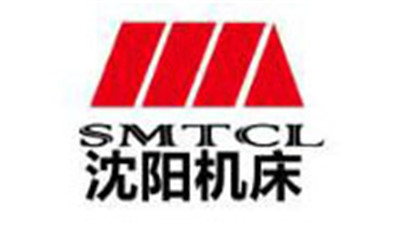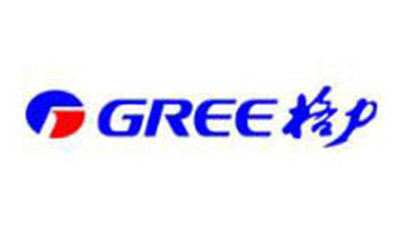Understanding the Importance of Three Phase Transformers in Modern Energy Systems
Table of Contents
- The Role of Three Phase Transformers in Enhancing Energy Efficiency
- Key Benefits of Three Phase Transformers in Industrial Applications
- Market Trends: Growth Rate of Three Phase Transformers in Global Energy Sector
- Comparative Analysis: Three Phase vs Single Phase Transformers Performance
- Impact of Three Phase Transformers on Renewable Energy Integration
- Cost-Benefit Assessment of Upgrading to Three Phase Transformer Systems
- Essential Insights on Three-Phase Dry Type Transformers: Applications, Advantages, and Selection Guide
- FAQS
- Conclusion
- Related Posts
You know, in today’s fast-changing energy scene, the Three-Phase Transformer isn’t just a fancy piece of equipment — it’s pretty much a backbone in modern power systems. It helps distribute electricity efficiently and keeps the whole grid stable. I came across a report from Global Market Insights that predicts the global transformer market will hit over $30 billion by 2026. And guess what? Three-phase transformers are at the forefront because they handle high voltages and large power loads way better than other types. Oh, and Dezhou Xinping Electronics Co., Ltd. — a high-tech company founded way back in March 2001 — really knows their stuff when it comes to making precision electronic transformers. They’ve got some pretty advanced three-phase solutions that match the growing need for reliable energy transmission. As our energy needs keep climbing worldwide, it’s super important for industry folks and companies to really get what makes three-phase transformers tick — they’re key players in building a solid and innovative energy infrastructure, no doubt.

The Role of Three Phase Transformers in Enhancing Energy Efficiency
You know, three-phase transformers are pretty much the backbone when it comes to boosting energy efficiency in today's modern power systems. They do a great job at balancing loads and reducing voltage problems, which is key to getting the most out of them. I’ve read that whenever voltage gets a bit unbalanced, these transformers don’t work quite as well—they get pushed away from their ideal operating points. So, it’s really important to have them in distribution networks to keep things running smoothly, with fewer losses and better reliability.
On the industry side, there’s definitely a big push towards greener energy solutions. For example, the market for green power transformers is set to grow from around $200 million in 2024 to nearly $349 million by 2030 — that’s a solid 6.7% annual growth! Plus, recent breakthroughs, like testing high-capacity transformers, really show that companies are serious about making our electrical grids safer and more eco-friendly. All these advancements help us better integrate renewable energy sources and emphasize how crucial three-phase transformers are in building a resilient, efficient energy future.
Understanding the Importance of Three Phase Transformers in Modern Energy Systems
This chart illustrates the energy efficiency of various three-phase transformers in modern energy systems. As seen, Transformer 3 demonstrates the highest efficiency at 95%, signifying the critical role of transformer technology in enhancing overall energy efficiency in energy systems.
Key Benefits of Three Phase Transformers in Industrial Applications
Three-phase transformers are honestly a game-changer in today’s industrial world. They do a pretty awesome job at delivering power efficiently and reliably. You know, unlike single-phase setups, these transformers keep everything balanced—making sure loads don’t overload one side and reducing the chances of voltage dips. That means machinery runs a lot smoother, which is super important when you can't afford any downtime. Plus, they save energy by reducing transmission losses, so they’re not just good for operations but also kinder on the budget.
Another thing I really like about three-phase transformers is how they can handle bigger power loads but still have a smaller footprint compared to single-phase options. That’s a total lifesaver in tight spaces where every square inch counts. On top of that, they actually improve power quality by trimming down harmonics and keeping voltage steady. All this stuff adds up—it helps equipment last longer and keeps sensitive processes running without a hitch. In the end, it all adds up to a more efficient and reliable setup that keeps the productivity flowing in industrial environments.
Market Trends: Growth Rate of Three Phase Transformers in Global Energy Sector
The global energy scene is really picking up pace these days, mainly because there's such a big push for more efficient and reliable power systems. One thing that’s making a huge difference is the use of three-phase transformers—they help make transmitting and distributing electricity much smoother and more efficient. As we bring more renewable energy sources into the mix, these transformers are becoming even more important. The market for three-phase transformers is expected to grow pretty fast, driven by more investments in infrastructure and the ongoing effort to modernize power grids.

Lately, it’s clear that more and more utilities, especially in developing regions where energy needs are skyrocketing, are starting to see the value in these transformers. They often talk about how they reduce energy losses and help manage loads better. Plus, with the focus shifting towards greener and more sustainable options, manufacturers are under pressure to come up with smarter, more adaptable transformer solutions that can keep up with the changing demands of today’s energy systems. All in all, it looks like the market for these transformers isn’t slowing down anytime soon. It’s shaping up to be a key part of how energy distribution evolves around the world.
Comparative Analysis: Three Phase vs Single Phase Transformers Performance
Three-phase transformers are pretty essential in today's energy systems because they perform better than single-phase ones. One of the main perks? They can put out more power and do a better job of distributing that load evenly. That’s a big deal, especially in industrial setups where steady power is everything for smooth operations. Plus, the way three-phase systems are designed makes the whole process of generating, transmitting, and distributing electricity more compact — saving both space and material costs.
On the flip side, single-phase transformers usually aren’t built to handle really heavy loads. They work fine for homes or small setups, but when demand ramps up, they might cause uneven power distribution and even waste more energy. What’s also pretty cool is that three-phase transformers can be scaled up pretty easily, so they can grow with future energy needs without needing a big overhaul. All in all, if you look at their performance, it’s clear that three-phase transformers are kinda essential for keeping energy reliable and efficient — especially with how complex our electrical grids are getting these days.

Impact of Three Phase Transformers on Renewable Energy Integration
Three-phase transformers are pretty much the backbone when it comes to smoothly integrating renewable energy sources into today’s power systems. As the world moves more and more toward renewable stuff like solar and wind, there's a real need for efficient ways to convert and distribute that power. That's where these transformers come in—they help keep the electricity stable and balanced, even when the energy coming from renewables is all over the place. By stepping up or down the voltage to the right levels, they make renewable energy systems more dependable and practical, turning them into solid alternatives to the old-school energy sources we’ve relied on for so long.
On top of that, three-phase transformers are great at cutting down energy losses during transmission. They can handle bigger power loads, which means less energy is lost when electricity travels over long distances. That’s a big win for renewable producers trying to make the most out of their power, and it also helps bring down costs for consumers. Plus, they fit really well with modern smart grid tech, making the whole grid more stable and resilient—especially when energy demand and supply are all over the place. As renewable energy keeps growing, it’s clear that three-phase transformers are crucial for building a sustainable and reliable energy future.
Cost-Benefit Assessment of Upgrading to Three Phase Transformer Systems
Upgrading to three-phase transformer systems? It’s a smart move that can really make a difference when it comes to saving money and boosting how efficiently our energy systems run. You see, these three-phase transformers are especially handy in factories and commercial buildings, where they help spread out the load more evenly and keep the voltage steady. That means fewer losses and smarter energy use—which naturally helps businesses cut down on their operational costs over time. Sure, the upfront cost might look a bit steep at first, but honestly, the long-term savings from better efficiency and lower maintenance usually make it worth it.
And get this—moving to three-phase transformers also plays a big role in supporting renewable energy sources. Since they can handle bigger loads and keep everything balanced across the phases, they make it easier to hook up large solar or wind farms. That’s a game changer for keeping energy supplies reliable and pushing us faster toward greener options. With all the push from regulations to adopt cleaner tech, investing in these upgrades isn’t just a good idea—it’s becoming a pretty smart strategic move for energy companies and stakeholders alike.
Essential Insights on Three-Phase Dry Type Transformers: Applications, Advantages, and Selection Guide
Three-phase dry type transformers are crucial components in various industrial applications, providing reliable and efficient power distribution. Their robust design and ability to operate without the risk of leakage make them ideal for environments where safety and performance are paramount. These transformers are particularly suited for sectors such as servo driver power supply, wind power generation, and photovoltaic power systems, addressing the growing demand for clean and renewable energy solutions. Additionally, they are frequently utilized in CNC machine tools, reflecting their significance in enhancing operational efficiency in manufacturing environments.
The advantages of three-phase dry type transformers extend beyond just safety and performance; they also offer enhanced energy efficiency and reduced maintenance costs. Their solid insulation system contributes to a lower environmental impact compared to oil-filled transformers, making them a favorable choice for industries aiming for sustainability. When selecting the right transformer, it's essential to consider the specific load requirements and the electrical environment. A well-chosen transformer will not only optimize the performance of servo drivers and other machinery but also ensure longevity and reliability in power distribution systems.
FAQS
: Three-phase transformers are electrical devices that enhance the efficiency of power transmission and distribution. They are crucial for reliable energy supply and are increasingly demanded due to the integration of renewable energy sources into power grids.
The market for three-phase transformers is projected to grow substantially, with a compound annual growth rate (CAGR) driven by rising infrastructural investments and the need for grid modernization.
Developing regions are experiencing a surge in energy demand, leading utility companies to adopt three-phase transformers for their benefits, such as reduced energy losses and improved load management.
Upgrading to three-phase transformers improves load distribution and voltage stability, resulting in lower energy losses and optimized consumption, which reduces operational costs over time for businesses.
Three-phase transformers facilitate the connection of large-scale solar and wind farms by handling higher loads and providing better phase balancing, which enhances the reliability of energy supply.
Increasing regulatory pressures to adopt greener technologies create financial incentives for energy stakeholders to upgrade to three-phase transformer systems, making it a strategically advantageous decision.
While there is an initial investment involved in upgrading to three-phase transformers, the long-term savings from improved efficiency and decreased maintenance expenses can offset these costs significantly.
Manufacturers are developing smart transformer solutions that can adapt to the dynamic demands of modern energy systems, driven by the push for sustainable practices.
Three-phase transformers generally offer higher efficiency, better load balancing, and reduced energy losses compared to traditional single-phase transformers, making them a preferred choice in many applications.
Three-phase transformers are especially beneficial in industrial and commercial settings where balanced load distribution and improved voltage stability are critical for operational efficiency.
Conclusion
Three-phase transformers are pretty essential when it comes to modern energy systems. They're really good at boosting overall efficiency across a bunch of industrial setups. Unlike single-phase transformers, they handle power loads way more effectively, which is why so many industries prefer them. This not only makes operations more reliable but also helps cut down on energy costs. As global energy needs keep climbing, the market for three-phase transformers is growing pretty quickly—no surprise there, since they’re so crucial for meeting future demands.
On top of that, these transformers are a key piece in integrating renewable energy sources into our existing power grids. They help make that shift towards cleaner, more sustainable energy a lot smoother. Companies like Dezhou Xinping Electronics Co., Ltd., which specialize in precision electronic transformers, are leading the charge here. They’re coming up with innovative solutions that tackle the rising demand for efficient energy systems. And when you look at the costs involved in upgrading to three-phase transformers, it’s clear that the investment pays off in the long run. All in all, they’re set to play a major role in shaping the future of energy infrastructure.
Related Posts
-

Unlocking Efficiency: How Three Phase Transformers Revolutionize Industrial Power Systems
-

How to Choose the Right Constant Voltage Transformer for Your Industrial Application
-

The Future of Innovative Applications in Aluminium Coil Technology
-

Transforming Industry Insights at the 2025 China Import and Export Fair Featuring 240 To 12 Volt Transformers
-

Understanding the Challenges Faced with Converter Transformers in Industrial Applications
-

Essential Checklist for Selecting Large Rated Current Common Mode Inductors in Your Projects
Blog Tags:


















